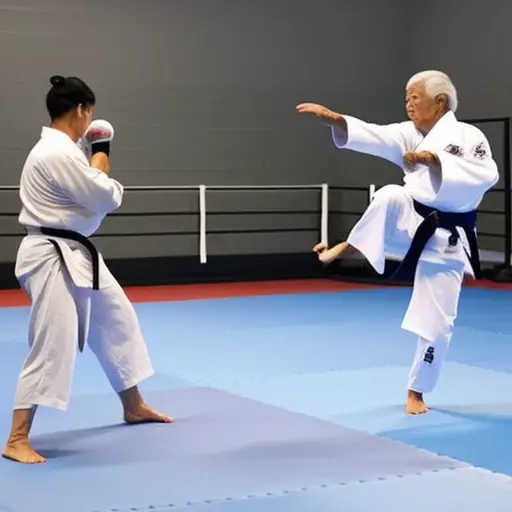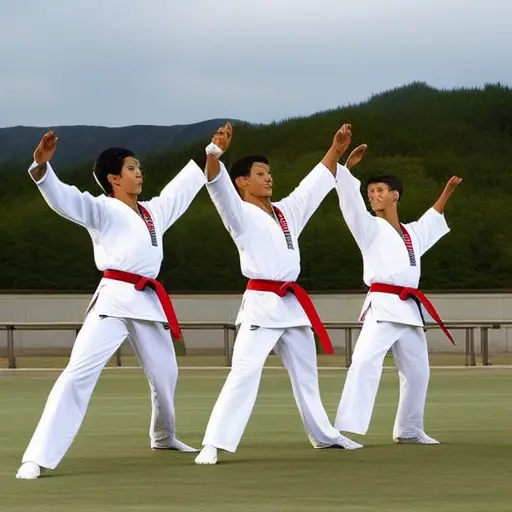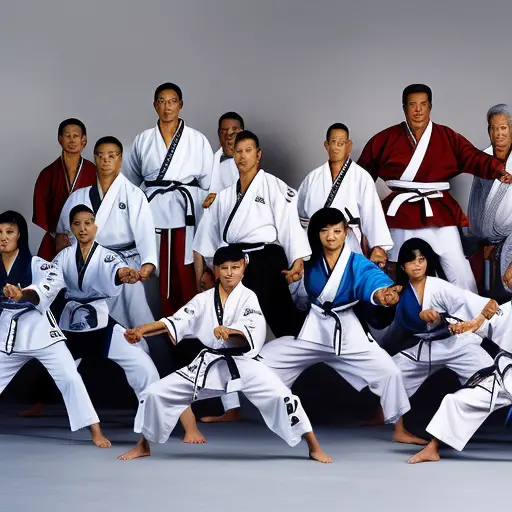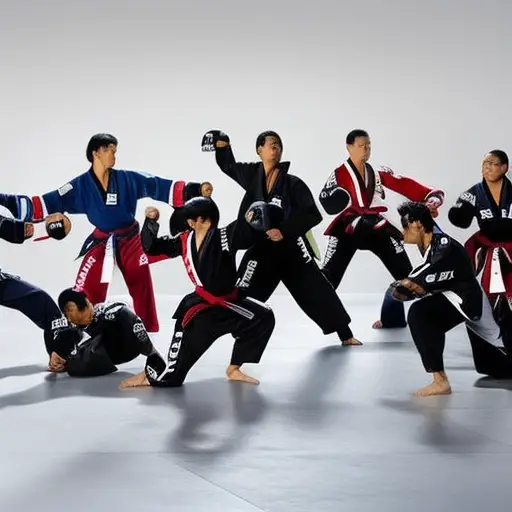The Therapeutic Impact of Taekwondo for Trauma Survivors
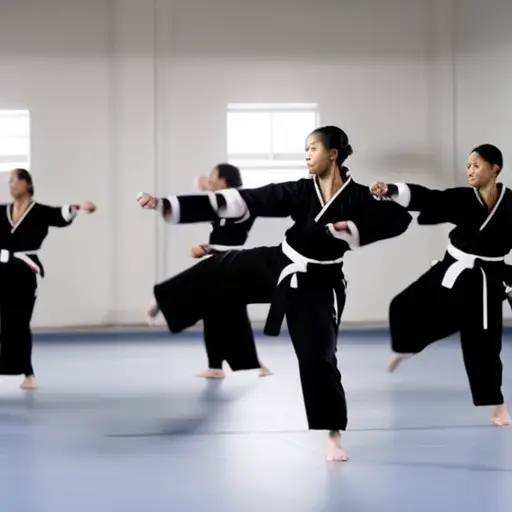
In a world where trauma can leave lasting scars, a powerful ally emerges to aid survivors on their path to recovery.
Taekwondo, a martial art renowned for its physical prowess, reveals a hidden therapeutic impact that goes far beyond the realm of combat.
This article explores the profound benefits of taekwondo for trauma survivors, delving into the ways in which it empowers individuals to reclaim their personal power, cultivate emotional resilience, and embark on a transformative journey towards healing and self-discovery.
Understanding the Link Between Trauma and Physical Health
Trauma can have significant implications for an individual’s physical well-being. The experience of trauma can lead to a dysregulated immune system, resulting in various physical health issues. Research has shown that trauma can affect the functioning of the immune system, making individuals more susceptible to illnesses and diseases. Chronic stress, a common consequence of trauma, triggers an inflammatory response in the body, which can lead to a weakened immune system. This weakened immune system can make trauma survivors more vulnerable to infections, autoimmune disorders, and other health problems.
Physical activity has been found to play a crucial role in trauma recovery. Engaging in regular exercise and physical activity can have a positive impact on both the physical and mental well-being of trauma survivors. Exercise has been shown to reduce inflammation in the body, strengthen the immune system, and improve overall health. Furthermore, physical activity can help alleviate the symptoms of trauma, such as anxiety and depression, by promoting the release of endorphins and improving mood.
Incorporating physical activity into trauma recovery programs can be beneficial for individuals in their healing journey. By addressing the physical health implications of trauma and encouraging regular exercise, trauma survivors can improve their overall well-being and increase their resilience.
The Role of Taekwondo in Reclaiming Personal Power
Taekwondo serves as a powerful tool for trauma survivors to reclaim their personal power. By participating in this martial art, individuals can experience a sense of empowerment and regain control over their bodies and minds.
Through the practice of Taekwondo, survivors can build self-confidence and develop a strong foundation for healing and growth.
Empowering Trauma Survivors
As trauma survivors begin the journey towards healing, the practice of Taekwondo plays a crucial role in helping them reclaim their personal power. Taekwondo empowers trauma survivors by providing them with self-defense skills and improving their mental well-being.
Self-defense skills: Taekwondo training equips survivors with practical self-defense techniques, giving them a sense of control over their own safety. By learning how to protect themselves physically, survivors can regain confidence and reduce fears associated with their traumatic experience.
Mental well-being: Taekwondo promotes mental well-being through its emphasis on discipline, focus, and self-awareness. The practice helps survivors develop a positive mindset and overcome negative emotions such as anxiety, depression, and low self-esteem. Taekwondo’s physical activities also release endorphins, promoting a sense of happiness and overall psychological well-being.
Personal growth: Taekwondo empowers trauma survivors by fostering personal growth and resilience. Through the challenges and achievements in training, survivors gain a sense of accomplishment and build self-esteem. This newfound personal power extends beyond the training mat and positively impacts their everyday lives.
Building Self-Confidence Through Taekwondo
How does the practice of Taekwondo assist trauma survivors in reclaiming their personal power and building self-confidence? Taekwondo provides trauma survivors with a powerful tool to rebuild their lives and regain their sense of self. Through the practice of self defense techniques and the cultivation of mental well-being, Taekwondo offers survivors a pathway to healing and empowerment.
Taekwondo is more than just a physical martial art. It is a holistic practice that focuses on developing both the body and the mind. By learning self-defense techniques, trauma survivors gain a sense of control over their bodies and their surroundings, allowing them to feel safer and more secure. This newfound ability to protect oneself can have a profound impact on self-confidence, helping survivors reclaim their personal power.
To illustrate the transformative power of Taekwondo, consider the following table:
| Before Taekwondo | After Taekwondo |
|---|---|
| Fearful | Empowered |
| Insecure | Confident |
| Vulnerable | Strong |
| Powerless | Resilient |
As trauma survivors engage in the practice of Taekwondo, they experience a shift in their mindset and emotions. They move from a place of fear, insecurity, vulnerability, and powerlessness to a place of empowerment, confidence, strength, and resilience.
This newfound self-confidence and personal power set the stage for the subsequent section about ‘healing through martial arts’. By building a strong foundation of self-belief and self-assurance, trauma survivors are better equipped to navigate their healing journey and find solace in the therapeutic benefits of martial arts.
Healing Through Martial Arts
By providing trauma survivors with a means to reclaim their personal power, martial arts, such as Taekwondo, serve as a transformative tool for healing. Taekwondo, as a form of martial arts therapy, offers a unique approach to healing that combines physical activity, mental discipline, and emotional well-being.
Here are three ways in which Taekwondo helps trauma survivors on their healing journey:
-
Physical empowerment: Engaging in Taekwondo allows trauma survivors to regain control over their bodies and build strength. Through the practice of various techniques and movements, survivors can develop physical stamina and improve their overall fitness, which can positively impact their self-esteem and body image.
-
Emotional release: Taekwondo provides a safe space for trauma survivors to express and release their emotions. The intense physical activity involved in martial arts can help survivors release pent-up anger, frustration, and stress, promoting emotional healing and a sense of catharsis.
-
Mind-body connection: Taekwondo emphasizes the integration of mind, body, and spirit. By focusing on breath control, mindfulness, and meditation, trauma survivors can cultivate a greater sense of self-awareness and connect with their bodies in a positive and empowering way. This mind-body connection can be instrumental in the healing process.
Incorporating Taekwondo as a healing technique within a trauma survivor’s journey can provide them with a path towards reclaiming their personal power and finding strength in their journey of healing.
Cultivating Emotional Resilience Through Taekwondo Practice
While practicing Taekwondo, trauma survivors can cultivate emotional resilience to aid in their healing process. Taekwondo offers a unique combination of physical exercise, mental discipline, and emotional balance that can contribute to emotional healing and trauma recovery. Through the practice of Taekwondo, survivors can develop important skills and strategies to cope with the emotional challenges they may face.
To better understand how Taekwondo can cultivate emotional resilience, we can explore the following factors:
| Factors | Impact on Emotional Resilience |
|---|---|
| Physical Exercise | Regular physical activity can reduce stress, improve mood, and increase self-confidence. Engaging in Taekwondo provides survivors with an outlet for releasing negative emotions and pent-up energy. |
| Mental Discipline | Taekwondo emphasizes focus, concentration, and self-control. These mental skills can help survivors better manage their emotions and respond effectively to triggers or stressful situations. |
| Emotional Balance | Taekwondo teaches emotional regulation and self-awareness. By learning to identify and express their emotions in a healthy way, survivors can develop greater emotional resilience and coping mechanisms. |
| Sense of Community | Taekwondo classes provide a supportive and inclusive environment where survivors can connect with others who have had similar experiences. This sense of community fosters a sense of belonging and offers emotional support. |
Taekwondo as a Tool for Self-Expression and Release
Taekwondo offers trauma survivors a unique outlet for self-expression and release. Through the practice of this martial art, individuals can experience emotional catharsis by channeling their feelings and trauma into physical movements.
This physical expression empowers survivors, allowing them to reclaim their bodies and find a sense of control and strength in the face of their past experiences.
Emotional Catharsis Through Taekwondo
One key aspect of utilizing taekwondo as a tool for self-expression and release is the ability to experience a range of emotions and achieve emotional catharsis. Taekwondo provides a safe space for trauma survivors to express and release their pent-up emotions, allowing for a significant emotional release. This process is an essential part of the healing process for individuals who have experienced trauma.
Through taekwondo, survivors can confront and work through their emotions, such as anger, fear, sadness, and frustration. The practice of taekwondo allows them to channel these emotions into powerful strikes, kicks, and movements, providing a physical outlet for emotional release. This emotional catharsis not only helps survivors process their trauma but also promotes emotional well-being and a sense of empowerment.
As survivors engage in this process of emotional catharsis, they begin to experience the transformative power of taekwondo, paving the way for the subsequent section on ’empowerment through physical expression’.
Empowerment Through Physical Expression
Additionally, taekwondo serves as an empowering tool for trauma survivors to express themselves physically and find release from their traumatic experiences. Through the practice of taekwondo, survivors can experience physical empowerment by engaging in various movements, strikes, and kicks. This physical expression allows them to channel their emotions and release pent-up energy, providing a cathartic experience that can be deeply healing.
Taekwondo can be seen as a form of self-expression therapy, where survivors are encouraged to explore their bodies and movements in a safe and controlled environment. By engaging in this physical expression, trauma survivors can regain a sense of control over their bodies and their lives, helping them to overcome the debilitating effects of their traumatic experiences.
This physical empowerment sets the stage for the subsequent section, where we will explore how taekwondo training helps in building confidence and self-esteem.
Building Confidence and Self-Esteem Through Taekwondo Training
By focusing on personal growth and overcoming challenges, individuals can develop confidence and improve their self-esteem through engaging in Taekwondo training. Taekwondo provides a platform for individuals to build their confidence and self-esteem by mastering self-defense techniques and developing mental resilience. Here are three ways in which Taekwondo training can help individuals in building confidence and self-esteem:
-
Mastering Self-Defense Techniques: Taekwondo training involves learning various self-defense techniques, which empowers individuals to feel more secure and capable of protecting themselves. By mastering these techniques, individuals gain confidence in their ability to defend themselves, which enhances their overall self-esteem.
-
Setting and Achieving Goals: Taekwondo training requires individuals to set both short-term and long-term goals. As they progress through their training, they experience a sense of accomplishment when they achieve these goals. This process helps individuals build confidence in their abilities and boosts their self-esteem.
-
Developing Mental Resilience: Taekwondo training is physically demanding and requires mental discipline. Through consistent training, individuals develop mental resilience, which helps them overcome challenges and setbacks both inside and outside the training environment. This mental resilience fosters a sense of confidence and self-assurance.
The Therapeutic Benefits of Mind-Body Connection in Taekwondo
Through the practice of Taekwondo, trauma survivors can experience the therapeutic benefits of a strengthened mind-body connection. Taekwondo is not just a physical activity; it is a practice that encourages individuals to be fully present in the moment, fostering a sense of mindfulness. This mindfulness benefits trauma survivors by helping them develop a heightened awareness of their own thoughts, emotions, and physical sensations. By focusing on their breath, movements, and the present moment, survivors can begin to reconnect with their bodies and regain a sense of control over their experiences.
One of the key therapeutic benefits of the mind-body connection in Taekwondo is stress reduction. Trauma survivors often experience ongoing stress and anxiety, which can have a significant impact on their overall well-being. Engaging in Taekwondo allows survivors to release tension and built-up emotions through physical movement, helping to reduce stress levels. Additionally, the practice of Taekwondo promotes the release of endorphins, which are natural mood boosters and can help alleviate symptoms of depression and anxiety.
Overcoming Fear and Anxiety Through Taekwondo Techniques
Furthermore, trauma survivors can effectively overcome fear and anxiety by utilizing specific Taekwondo techniques. Taekwondo, a Korean martial art form, offers a range of practices that help individuals regain control over their emotions and build resilience. Here are some ways in which Taekwondo techniques can aid trauma survivors in overcoming fear and anxiety:
-
Controlled Breathing: Taekwondo emphasizes the importance of deep, controlled breathing. By focusing on their breath, trauma survivors can regulate their heart rate and reduce feelings of panic or anxiety.
-
Physical Conditioning: Engaging in physical activities such as practicing kicks and punches can help trauma survivors release pent-up energy and tension. Regular physical exercise also promotes the production of endorphins, which can improve mood and reduce anxiety.
-
Mental Focus and Mindfulness: Taekwondo requires practitioners to focus their attention on the present moment. This mindfulness practice helps trauma survivors shift their focus away from fears and worries, allowing them to regain a sense of control over their thoughts and emotions.
Empowering Trauma Survivors: Taekwondo and the Path to Recovery
The practice of Taekwondo offers a powerful pathway to empowerment and recovery for trauma survivors. Trauma recovery can be a long and challenging journey, and finding effective methods of healing is crucial. Martial arts therapy, such as Taekwondo, has been increasingly recognized as a valuable tool in helping trauma survivors regain a sense of control and confidence.
Taekwondo provides a safe and structured environment where individuals can learn self-defense techniques while also addressing the emotional and psychological aspects of trauma. Through the practice of Taekwondo, survivors can develop physical strength, discipline, and focus, which can have a profound impact on their overall well-being.
One of the key benefits of Taekwondo for trauma recovery is the empowerment it offers. Trauma often leaves survivors feeling powerless and vulnerable. Taekwondo allows individuals to reclaim their strength and agency by teaching them self-defense skills and promoting self-confidence. The physical movements and techniques in Taekwondo help survivors reconnect with their bodies, which is essential in the healing process.
Moreover, the sense of community and support found in Taekwondo classes can be invaluable for trauma survivors. The camaraderie and understanding that come from training with others who have experienced trauma can create a safe space for healing and growth.
Frequently Asked Questions
How Long Does It Typically Take for Trauma Survivors to See the Therapeutic Benefits of Practicing Taekwondo?
The timeframe for trauma survivors to experience therapeutic benefits from practicing Taekwondo varies depending on individual factors such as the severity of trauma, personal resilience, and commitment to the practice.
Can Practicing Taekwondo Worsen the Symptoms of Trauma in Some Individuals?
Practicing taekwondo may potentially worsen trauma symptoms in some individuals. It is crucial to consider individual readiness, trauma history, and the guidance of a trained professional. Alternative therapies should also be explored to ensure the best possible outcomes.
Are There Any Specific Taekwondo Techniques or Exercises That Are More Effective in Helping Trauma Survivors Than Others?
Specific techniques and exercises in taekwondo can have a significant therapeutic impact on trauma survivors. These techniques are tailored to address the needs of individuals and aim to promote healing, resilience, and empowerment in the recovery process.
Is It Necessary to Have Prior Experience in Martial Arts to Benefit From Taekwondo as a Trauma Survivor?
Is prior experience in martial arts necessary for trauma survivors to benefit from practicing taekwondo? While previous training can enhance technique, the therapeutic benefits of taekwondo extend to all regardless of prior experience, providing a healing outlet for trauma survivors.
Are There Any Potential Risks or Side Effects Associated With Using Taekwondo as a Therapeutic Tool for Trauma Survivors?
Potential risks and safety precautions should be considered when using Taekwondo as a therapeutic tool for trauma survivors. It is important to assess physical fitness, provide proper supervision, and create a safe and supportive environment to minimize any potential side effects.
Conclusion
In conclusion, the practice of Taekwondo holds significant therapeutic potential for trauma survivors.
By engaging in this martial art, individuals can reclaim personal power, cultivate emotional resilience, and build confidence and self-esteem.
Taekwondo also offers a means of self-expression and release, allowing survivors to overcome fear and anxiety.
Furthermore, the mind-body connection inherent in Taekwondo practice contributes to its therapeutic benefits.
Like a guiding light in the darkness, Taekwondo empowers trauma survivors on their path to recovery.

